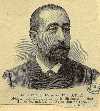 In 2000, natural gas and electricity trading giant Enron was the seventh largest corporation in the US. In 2001, it became the largest bankruptcy and stock collapse in US history at the time, devastating the pensions of some 20,000 employees. Fastow, Enron’s chief financial officer, was one of more than 20 people who were ultimately convicted of or pleaded guilty to fraud, conspiracy, and other crimes related to deceptive accounting practices. How long is Fastow’s prison sentence? Discuss
In 2000, natural gas and electricity trading giant Enron was the seventh largest corporation in the US. In 2001, it became the largest bankruptcy and stock collapse in US history at the time, devastating the pensions of some 20,000 employees. Fastow, Enron’s chief financial officer, was one of more than 20 people who were ultimately convicted of or pleaded guilty to fraud, conspiracy, and other crimes related to deceptive accounting practices. How long is Fastow’s prison sentence? Discuss
Source: The Free Dictionary

 Considered one of the greatest English poets, Keats worked as a surgeon’s apprentice before devoting himself entirely to poetry at age 21. During a few intense months in 1819, he produced many of his greatest works, including “Ode on a Grecian Urn,” “Ode to a Nightingale,” and “To Autumn.” His Lamia, Isabella, The Eve of St. Agnes, and Other Poems is perhaps the greatest single volume of poetry published in England in the 19th century. Tragically, Keats died at just 25 from what disease?
Considered one of the greatest English poets, Keats worked as a surgeon’s apprentice before devoting himself entirely to poetry at age 21. During a few intense months in 1819, he produced many of his greatest works, including “Ode on a Grecian Urn,” “Ode to a Nightingale,” and “To Autumn.” His Lamia, Isabella, The Eve of St. Agnes, and Other Poems is perhaps the greatest single volume of poetry published in England in the 19th century. Tragically, Keats died at just 25 from what disease?  In 1980, a group of radical environmental activists formed the group Earth First!, pledging “No Compromise in Defense of Mother Earth!” In 1985, the group held its first “tree sit,” in which members sat in and around trees to prevent logging. From about 1987 on, the group turned to direct action tactics and attracted many new members. Though the organization has its roots in the US, chapters have developed in countries spanning the globe. What was the Merseyside Dock Action?
In 1980, a group of radical environmental activists formed the group Earth First!, pledging “No Compromise in Defense of Mother Earth!” In 1985, the group held its first “tree sit,” in which members sat in and around trees to prevent logging. From about 1987 on, the group turned to direct action tactics and attracted many new members. Though the organization has its roots in the US, chapters have developed in countries spanning the globe. What was the Merseyside Dock Action?  On the night before Halloween in 1938, many listeners tuned in late to Welles’ Mercury Theatre on the Air, missing the program’s introduction announcing that it would be broadcasting an adaptation of H. G. Wells’ The War of the Worlds. The innovative format, which featured news segments reporting a Martian invasion, was so convincing that it panicked the listening public and brought national attention to Welles. What urban legends exist about what happened during the broadcast?
On the night before Halloween in 1938, many listeners tuned in late to Welles’ Mercury Theatre on the Air, missing the program’s introduction announcing that it would be broadcasting an adaptation of H. G. Wells’ The War of the Worlds. The innovative format, which featured news segments reporting a Martian invasion, was so convincing that it panicked the listening public and brought national attention to Welles. What urban legends exist about what happened during the broadcast?  Also known as the
Also known as the  Tourette syndrome is a rare neurological disease characterized by repetitive tics, movement disorders, uncontrolled grunts, and, occasionally, verbal obscenities. It is named for French neurologist Georges Gilles de la Tourette, who first described it in the 1880s. Apart from his clinical work, Tourette lectured on a variety of topics, including the medical and legal ramifications of mesmerism, now called hypnosis. In the 1890s, one of Tourette’s former patients shot him in the head. Why?
Tourette syndrome is a rare neurological disease characterized by repetitive tics, movement disorders, uncontrolled grunts, and, occasionally, verbal obscenities. It is named for French neurologist Georges Gilles de la Tourette, who first described it in the 1880s. Apart from his clinical work, Tourette lectured on a variety of topics, including the medical and legal ramifications of mesmerism, now called hypnosis. In the 1890s, one of Tourette’s former patients shot him in the head. Why?  In January 1919, a molasses tank, containing as much as 2,300,000 gal (8,700,000 L) of molasses, exploded in Boston, sending a wave of molasses coursing through the streets at an estimated 35 mph (56km/h). The wave of molasses was so powerful that it broke the girders of nearby elevated train structures, lifted a train off its tracks, and destroyed nearby buildings. The streets were flooded with about 3 ft (1 m) of molasses, hindering rescue efforts. How many people were killed in the disaster?
In January 1919, a molasses tank, containing as much as 2,300,000 gal (8,700,000 L) of molasses, exploded in Boston, sending a wave of molasses coursing through the streets at an estimated 35 mph (56km/h). The wave of molasses was so powerful that it broke the girders of nearby elevated train structures, lifted a train off its tracks, and destroyed nearby buildings. The streets were flooded with about 3 ft (1 m) of molasses, hindering rescue efforts. How many people were killed in the disaster?